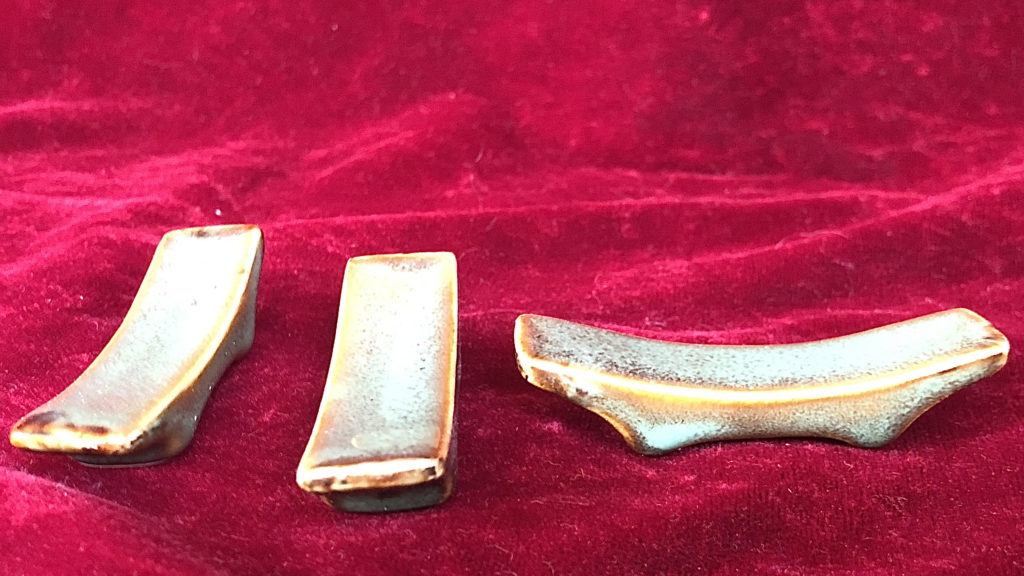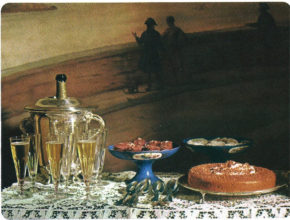The chopstick has been used since 1200 B.C. starting in China and moving steadily throughout Asia over the next seven hundred years, though they were used mainly for cooking not for eating for hundreds of years. Bronze versions of chopsticks were even found at Yinxu archeological digs that date back to near 400 B.C. Over time, chopsticks became the eating implement of choice for nearly every rice based culture.
Chopstick rests or Hashioki have traditionally been used at formal dinners. More casually, they were seen in restaurants and have only recently become a more common home item, (recent is a relative term given how long these utensils has been used). They are made in a range of materials, from porcelain to plastic, wood to jade.
Hashioki are mainly used in Japan. In Korea chopsticks are more commonly place directly on the table and are lined up to the right of the place.
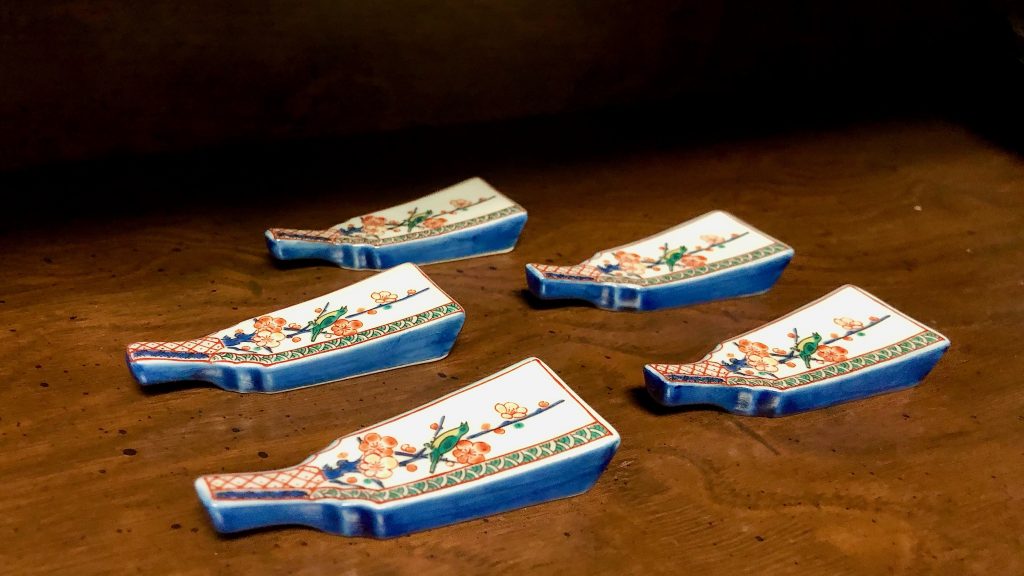
If you travel to Japan and are faced with using a rest, you should know there are a few rules. Rests are placed to the left side of the dishes with the chopsticks parallel to the table edge of the user and the points facing the left. You’ll notice that if rests are not provided at a restaurant, many Japanese will create a rest out of the paper sheath the chopsticks come in. A good friend of mine usually makes a little origami rest out of hers. While you aren’t expected to do this, certainly not make them into little birds or frogs, you would do well to fold it into a triangle to keep your chopsticks off of the table.
Now in your own home, you’ll use these items as you see fit, but understand that what we may see as “etiquette” rules are deep cultural traditions in other countries and it’s only respectful to follow them.
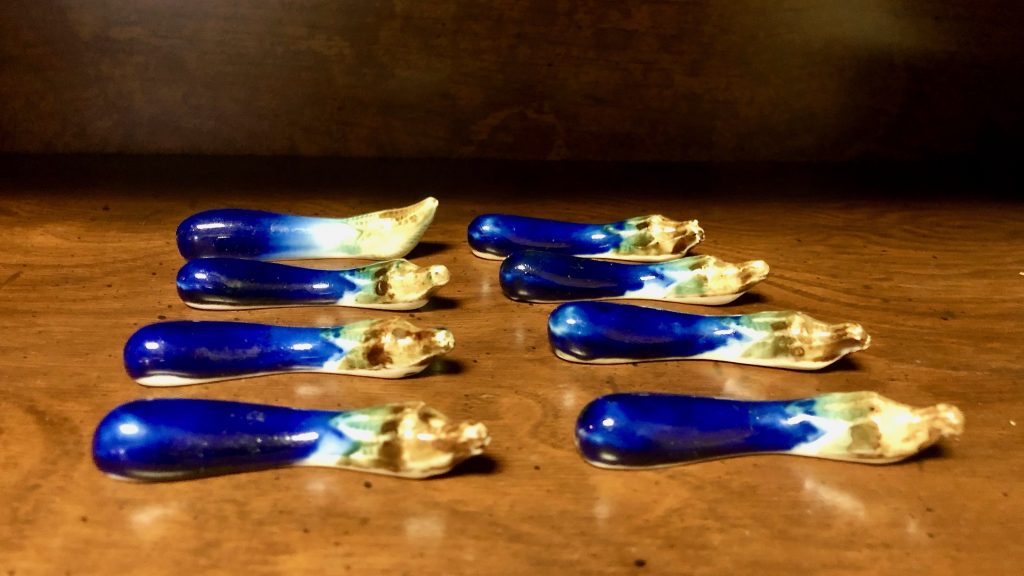
I love chopstick rests, which probably comes out of my love of sushi. Rests are a fun way to make a sushi delivery look even more attractive. Chopstick rests are mostly inexpensive and the porcelain variety come in a multitude of adorable shapes and styles.
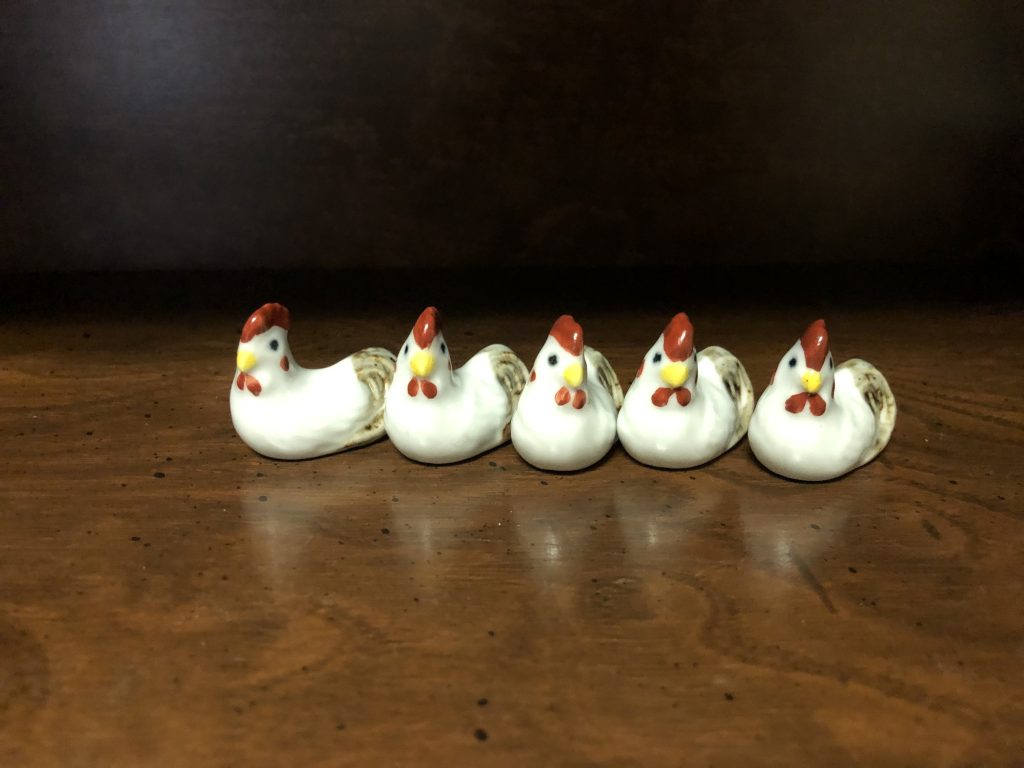
How are you holding up? I’m sending you love and good wishes, Cheri
